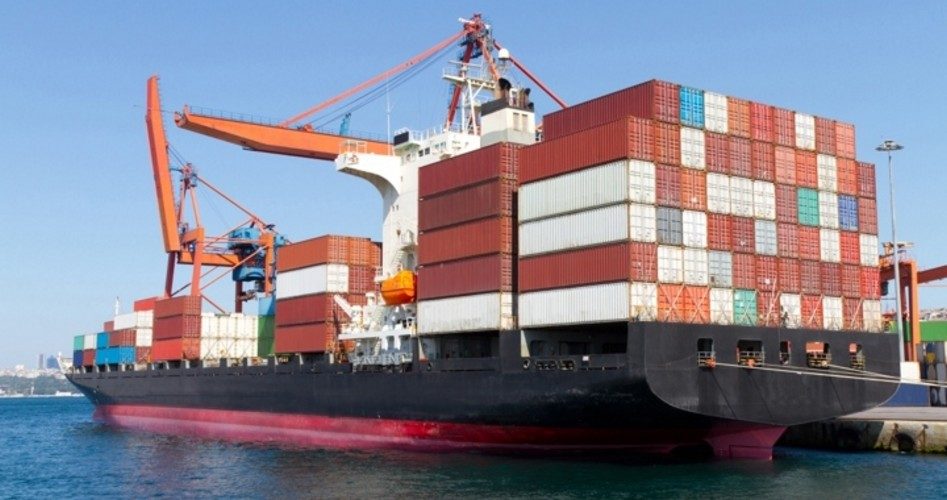
With just two months until the next (16th) round of negotiations of the Trans-Pacific Partnership (TPP) begin in Singapore, supporters of the inaptly named “free trade agreement” are ratcheting up the number of reports favorably promoting formation of the regional trade bloc.
In an article published by World Politics Review, for example, Edward Alden writes that the Obama administration’s acceptance and acceleration of the TPP is the “biggest swerve” away from a global Great Depression.
Alden writes:
The global financial crisis of 2008 and the recession that followed produced the first steep decline in world trade since the Great Depression. Yet rather than falling down, the United States and other countries have managed to swerve and keep going.
The biggest swerve was the embrace of regional trade liberalization, starting with Asia.
Identifying the TPP as the president’s “top trade priority,” Alden suggests that the “embrace of regional trade liberalization” will keep the United States from falling down the steep decline toward economic devastation.
Then, for those unfamiliar with the hows and whys of the TPP, the Peterson Institute for International Economics has published a monograph by Jeffrey J. Schott, Barbara Kotschwar, and Julia Muir aimed at unraveling this complicated trade deal by “providing a reader’s guide to the TPP initiative.”
To help readers realize the benefits of the creation of the TPP, the authors begin by explaining “how much the TPP countries are alike and like-minded in their pursuit of a comprehensive trade deal.”
How alike are the countries? One means of comparison shows an otherwise uncrossable chasm between several of the TPP member states.
Below are the gross domestic products (GDP) and world rankings for 2011 as reported by the International Monetary Fund of the 11 countries currently participating in the TPP:
The United States ranks first with a GDP of over $15 trillion.
Canada ranks 11th with a GDP of about $1.7 trillion.
Australia ranks 12th with a GDP of about $1.5 trillion.
Mexico ranks 14th with a GDP of almost $1.2 trillion.
Malaysia ranks 36th with a GDP of nearly $288 billion.
Singapore ranks 38th with a GDP of about $260 billion.
Chile ranks 39th with a GDP of about $248 billion.
Peru ranks 51st with a GDP of about $177 billion.
New Zealand ranks 55th with a GDP of almost $159 billion.
Vietnam ranks 57th with a GDP of nearly $123 billion.
Brunei ranks 111th with a GDP of $16 billion.
Math doesn’t lie: The total GDP of the other 10 TPP countries equal roughly one-third of that of the United States. The relevant question is whether partnership with these countries will result in a strengthening of their economies or a weakening of our own.
Admittedly, a country’s GDP is only one of many relevant metrics that could be used to compare relative global economic position.
The irrefutable fact is, however, that when looking at just that it is evident that the Obama administration is somehow willing to tie the economic prosperity of the United States to much weaker countries.
Beyond the economic disparity of the TPP, there is the damage to American sovereignty that will accompany acceptance of the TPP. The biggest step toward globalization and a severing of any political control by the elected representatives of the American people over the establishment of trade policy will come from the achievement of the ultimate aim of the TPP: creation of a Free Trade Area of the Asia-Pacific (FTAAP).
An article written in the Georgetown Journal of International Law says that the TPP negotiations “are designed to culminate in a ‘gold standard’” free trade agreement (FTA). The article continues:
The TPP negotiations are among the more recent of a large number of FTAs and Regional Trade Agreements (RTAs) that have been or are being negotiated between the member economies of the Asia-Pacific Economic Cooperation (APEC) forum. Since the APEC Leaders’ Bogor Declaration in November 1994, the member economies have been committed on some level to the objective of achieving an environment for “free and open” trade and investment in the Asia-Pacific region.
In the argot of globalism, “free and open trade” translates as “economic and political integration.” Later in the Georgetown piece, U.S. Trade Representative (USTR) Ron Kirk is quoted as calling for the TPP to be “more than a broad concept.”
Additional evidence of the “ambitious” goal of the TPP discussions is found in a press release issued by representatives of the member nations attending an Asia-Pacific Economic Cooperation (APEC) meeting in Honolulu in 2011:
We are delighted to have achieved this milestone in our common vision to establish a comprehensive, next-generation regional agreement that liberalizes trade and investment and addresses new and traditional trade issues and 21st-century challenges. We are confident that this agreement will be a model for ambition for other free trade agreements in the future….
The current version of the USTR’s TPP website declares that “The TPP is the most credible pathway to broader Asia-Pacific regional economic integration.”
Remarkably, the authors of the Georgetown review state that the ultimate goal of the TPP isn’t just the creation of a FTAAP. They insist that the TPP is a “trade agreement designed to achieve broad liberalization and a high degree of economic integration among the parties.” There’s that word “integration” again.
At the G20 Leading Economies Summit in Los Cabos, Mexico, USTR Kirk announced that Mexico would soon join the TPP. At a press conference after that announcement, Mexican President Felipe Calderón described the the TPP as “one of the free trade initiatives that’s most ambitious in the world” and one that would “foster integration of the Asia Pacific region, one of the regions with the greatest dynamism in the world.”
The Peterson Institute primer promotes integration, as well, perhaps in an effort to make the economic union more palatable to Americans who believe the integration hype or are unaware of the myriad threats posed by such a transnational agreement not only to our financial future, but to the future of our liberty, as well.
These changes will come in the form of the surrendering by Congress of the right to set trade policy to an unelected FTAAP board of directors, led, of course, by representatives of the other member states, including those with lesser economic strength and those ruled by communist regimes.
“On the economic side, expanding the geographic area of a free trade zone effectively dilutes remaining protection for domestic industries and is thus strongly resisted. On the political side, the rules of origin, different in each agreement, are meant to restrain competition and to provide side payments to domestic companies,” the Peterson Institute article explains.
How will the links of this “trade” chain be forged? According to the Peterson piece, “the pathway to an FTAAP will follow a hybrid approach that links elements of the TPP and intra-Asian approaches to trade integration.”
Integration is a word that is painful to the ears of constitutionalists and those unwilling to surrender U.S. sovereignty to a committee of globalists who are unelected by the American people and unaccountable to them. Integration is an internationalist tool for subordinating American law to the globalist bureaucracy at the United Nations.
Economic and political integration will push the once independent United States of America into yet another collectivist bloc that will facilitate the complete dissolution of our nation and our states into no more than impotent members of a one-world government.
The next round of TPP talks is scheduled to be held in Singapore from March 4-13. There is still time for Americans to contact their senators to remind them of their oaths of office to protect, preserve, and defend the Constitution. This includes zealously guarding American sovereignty by not relinquishing control of trade policy to globalists and communists.
Photo: Container ship via Shutterstock
Joe A. Wolverton, II, J.D. is a correspondent for The New American and travels frequently nationwide speaking on topics of nullification, the NDAA, and the surveillance state. He can be reached at [email protected].


